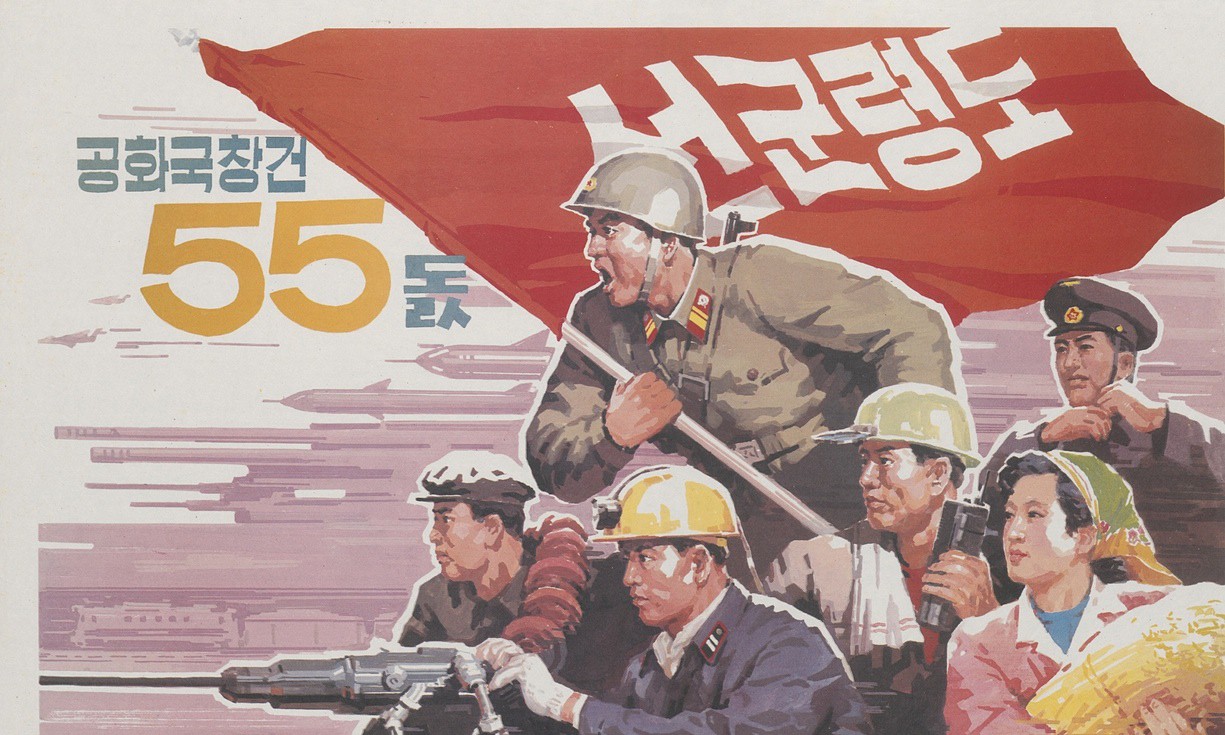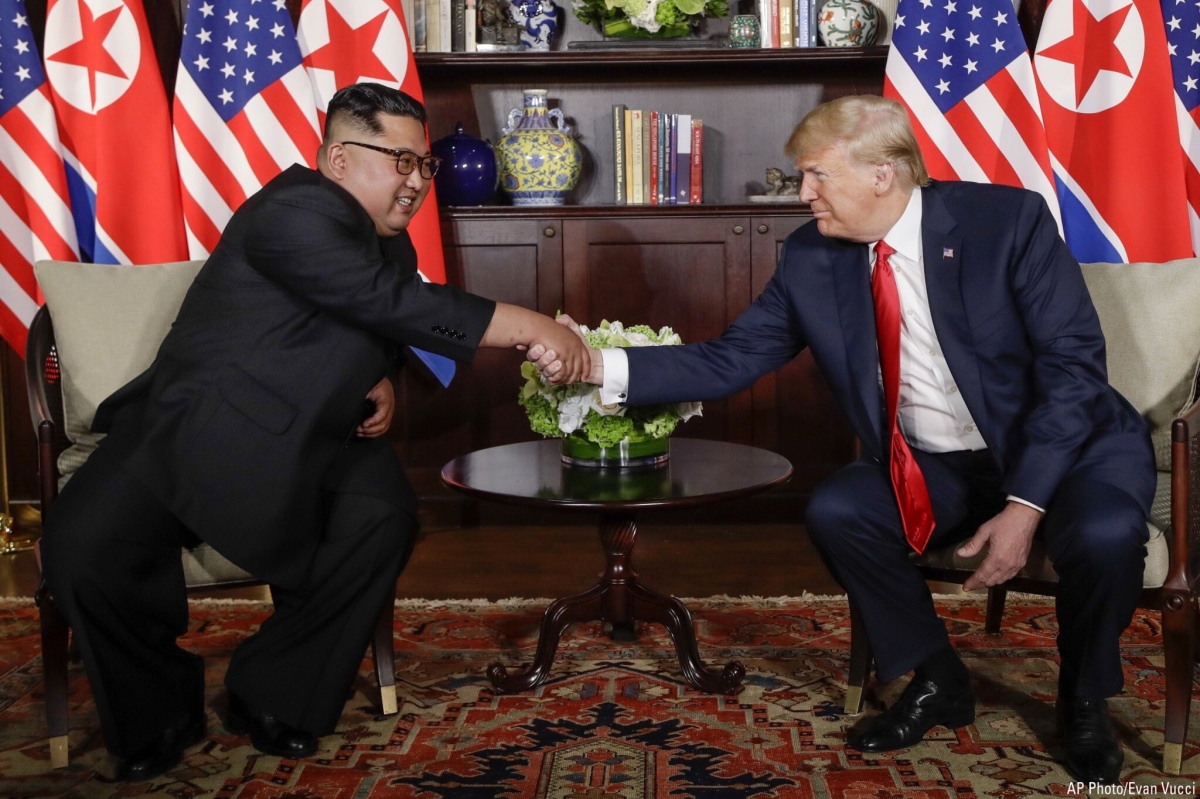Since this page has run dormant for several years, I will be migrating a lot of the blogging that would have been on this site to www.benjaminzimmer.com. I am thinking of doing a major reboot of this website which will take a while and require a lot of thinking. While this site may remain active, I have no intentions of updating it for the time being. Please check out http://www.benjaminzimmer.com for more blog posts and to learn more about my professional research projects and publications. I appreciate the time you have taken to read this site and I look forward to returning when I have the time to make this website what I envision.
North Korea: Time for a New Strategy?
I do apologize for the length of time I have taken off. Grad school and work have been very time consuming, but here is something to pass the time. on March 7, I published an article outlining a new strategy in Foreign Policy Press. Below is an excerpt of the article:
President Trump and Kim Jung-un met in Hanoi on February 27 and 28 to work toward a resolution on the denuclearisation of the Korean peninsula.
During the summit, President Trump floated the possibility of relieving economic sanctions on North Korea in return for denuclearisation steps from the Kim regime. Trump’s promise, however, may have little effect on North Korea as the regime has little incentive to comply with sanctions in the first place.
A more effective strategy Trump can pursue to provide strong incentives for the North Korean elite to denuclearise is integrating the national interests of regional powers – China and South Korea – into a positive sanctions regime focused on economic and security assurances. This strategy can be more effective than his strategy of maximum pressure in coercing the North Korean regime.
Read the whole article at “North Korea: Time for a New Strategy?” Foreign Policy Press, March 7, 2019.
North Korea’s 70th Anniversary
September 9 is National Foundation Day in North Korea, a day marked with parades and celebrations. 2018’s National Foundation Day was special: it is North Korea’s 70th anniversary. To celebrate, North Korea held its first Arirang Mass Games in 5 years and put on a massive military parade. This post will examine the meaning and symbolism of each event, using the 70th anniversary to show how the mass games and military parades can act as a window into the thoughts on foreign policy in North Korea.
Mass Games: the Events of North Korea’s 70th Anniversary
Arirang Mass Games have played an integral role in North Korean society as markers of major holidays and celebrations, and have become a major part of the foreign policy platform of North Korea, usually showcasing major themes through art. As a pillar of its foreign policy, “it is no surprise that the themes of Korean division, unity, nationalism, and reunification appear more frequently in this symbiosis of art, physical culture, and ideology than any other issue (Udo Merkel)[1]. Kim Jung-il reiterated the prominence of mass gymnastics as a pillar of foreign policy, saying the games “make an active contribution to the development of friendly relations with other nations.” During the speech, Kim Jung-il also highlighted the domestic aspects of the games, describing how they can instill proper communist thought in schoolchildren (On Further Developing Mass Gymnastics)[2]. In 2018, the games highlighted a newly emerging aspect of North Korea’s foreign policy: diplomacy. There was a noticeable absence of military might at the games in 2018 (The Atlantic)[3]. As North Korea seeks to showcase a political agenda through the mass games, there are other reasons for the importance of the mass games to the North Korean elite.
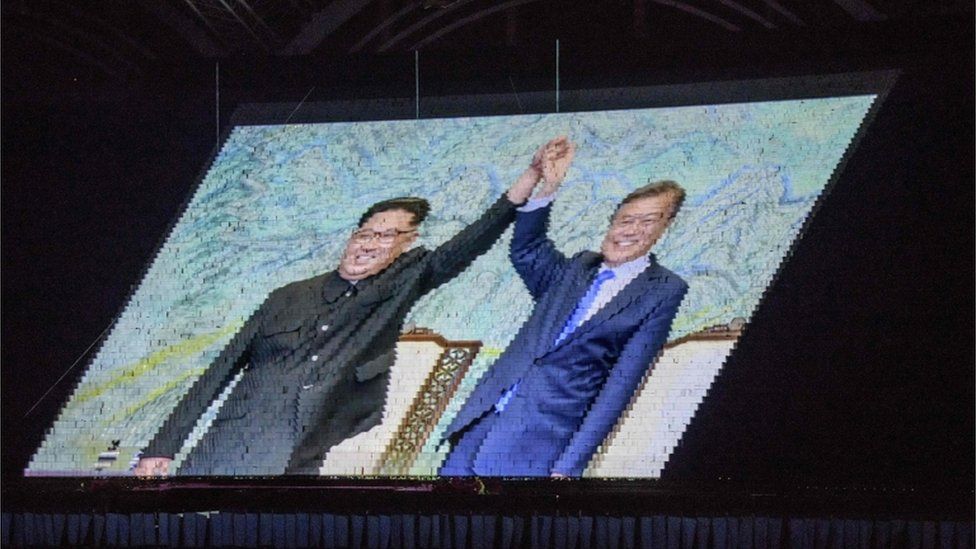
A key driver in the North Korean economy is the ability to bring in foreign currency. Not surprisingly, the mass games are a ticketed event which draws in plenty of tourists and foreign cash. According to Visit North Korea, a travel agency, tickets cost anywhere from €100-€800 ($115-$925 USD)[Visit North Korea]. Tickets to the 2013 mass games–North Korea did not hold mass games from 2014-2017–were €80-€300 [Korea Konsult]. The United Nations even labeled the mass games “a major source of foreign currency revenue for the DPRK” (UN Commision of Inquiry Report 2014). As sanctions continue to bite, the mass games will provide an efficient, guaranteed flow of cash to North Korea’s struggling economy as tourists flock to catch a glimpse of the “hermit kingdom.”
Though the mass games draw in tourists, their effect is muted at best among regular North Korean people. Inside Pyongyang, most residents do not have expectations for the games and they create stress on the parents and students mobilized to participate (DailyNK). Outside Pyongyang, people were more focused on their daily life. Residents in North Hamgyong Province were mobilized to work and governmental meetings were held in Hyesan (DailyNK). While tourism is a big draw to the mass games, North Koreans tend to live as if the games are just another event. After all, calls to sacrifice for the state come often and the games are yet another time when the government calls for sacrifice (DailyNK).
One of the key events that North Korea has used to mark massive celebrations is the aptly named mass games. For the 70th anniversary, the games featured Inter-Korean diplomacy as they told the story of North Korea’s 70-year history. Monetization of the games also ensures a steady flow of income for the North Korean regime, even though their effect may be muted on the domestic audience. There is, however, a more frequent event which can reveal more about North Korea’s intentions than the Arirang Mass Games: the military parade.
A Parade Worth Watching: What did We Learn From the Military Parade?
A key feature to North Korean celebrations and holidays is the military parade through Kim Il-sung square. The military parade acts a way for North Korea to showcase its intent and capabilities. In 2015, North Korea staged a military parade to commemorate the 70th founding of the Workers Party of North Korea. On display in 2015 were systems central to the North’s missile program, including the KN-08 ICBM which, at that time, remained untested; the Musudan; and the Nodong, among other systems (The Diplomat). Though early parades under Kim Jung-un did not showcase groundbreaking technological leaps, they worked in more subtle manners to craft an image of Kim Jung-un as a strong leader and strengthen his legitimacy as the leader of North Korea (NBC News).
Recent parades appear “intended to send a message to the rest of us: The country is seeking a program sophisticated enough to fire a guaranteed nuclear retaliation in any war” (NY Times). In April 2017, North Korea paraded a wide variety of missile technology. The most notable were several large canisters on transporters associated with previous ICBMs (CNN). Though the canisters may have been empty, they showcased “[North Korea’s] intent to develop mobile, solid-fuel missiles capable of reaching the United States” (CSIS). In a February 2018 parade, North Korea unveiled the Hwansong-14 and Hwansong-15 ICBM varients for the first time, though they had been tested 3 times in 2017 (Reuters). North Korea has utilized the military parade to showcase its military strength and missile developments.

The National Foundation Day military parade on September 9, 2018, through Kim Il-sung square sought to convey a different message. As diplomacy continues, Kim Jung-un toned down the offensive posturing common with recent military parades. Despite continued advancement, North Korea did not display any ballistic missiles and only paraded conventional weapons and troops through the square (DW). North Korea also left out all references to its nuclear program (Vox). Instead, the event focused on the economic development of North Korea. Before the parade, Kim Yong-nam gave a speech focused on economic development and goals. Workers and nurses marched through the square next to floats touting North Korea’s economic advancement in 2018 (Haaretz).
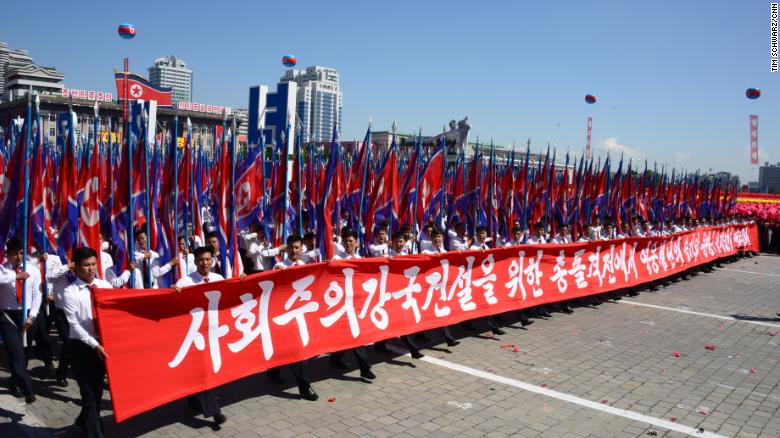
The military parade is yet another pillar of North Korea’s foreign policy, taking on a symbolic importance similar to that of the Arirang Mass Games. Under Kim Jung-un, the military parade has been used to showcase offensive weapons development. After a spout of successful diplomacy, Kim forwent displaying aggressive weapons and instead focused on economic development of North Korea. The parade gives the international community a look into how Pyongyang will conduct its foreign policy and what advancements it is looking to make in a variety of fields.
Conclusions
North Korea’s 70th Anniversary ceremonies showcased a strong push for diplomatic and economic advancement in a variety of realms. The mass games placed diplomacy front and center, even showing pictures of Kim Jung-un and South Korean President Moon Jae-in holding hands–a similar picture of Kim with Xi Jinping was also displayed. During the military parade, civilian groups took center stage and advanced military weaponry was left out. It is clear that Kim wishes to continue his pursuit of economic development and diplomatic outreach.
By highlighting these two themes, the 70th also showed just how political the mass games and the military parade can be. Not only do they highlight major trends, but they also can give insight into the future of North Korea foreign policy. Though not the only windows into North Korea, they can give a strong indication as to which direction North Korean foreign policy will take in the short-term.
Notes
[1] Merkel, Udo. “‘The Grand Mass Gymnastics and Artistic Performance Arirang’ (2002–2012): North Korea’s Socialist–Realist Response to Global Sports Spectacles,” The International Journal of the History of Sport, pp. 1247-1258.
[2] This is a North Korean source.
[3] The Atlantic article has some very good pictures of the Arirang Mass Games in 2018 but does focus on the military parade. One of the biggest highlights of the 2018 Arirang Games was a giant portrait of Kim Jung-un and South Korean President Moon Jae-in shaking hands, which was displayed with Moon Jae-in in attendance at the games. It is the first time a South Korean president’s portrait has been displayed in the mass games.
Daily Update: August 20
The Big News:
Emotions ran high on North Korea’s Mount Kumgang as separated families reunited for the first time in 65 years. Starting around 3pm local time, 185 North Koreans met with 197 South Koreans for a two-hour group meeting (NKNews). Around 10am local time on Tuesday, the families will meet again in their hotel rooms, after which they will have lunch together (Korea Herald). The reunions, the first since 2015, will end on Wednesday.
Meetings like these draw international attention for many reasons. The first is the emotional atmosphere; North and South Korea have laws prohibiting citizens to travel across the border to reunite with families (AP). For many, these reunions are the only time they will meet their relatives (BBC). Emotional headlines tend to adorn the pages of major newspapers throughout the world. For instance, The Independent ran “92-year-old South Korean mother meets her 71-year-old North Korean son for the first time since he was four” as subheadline for an article on the first day of the reunions (The Independent).
The reunions also show the degree of cultural and political separation between North and South Korea. The New York Times wrote, “on Monday, Ms. Lee, like many of the South Koreans present, could see the signs of economic suffering in their North Korean relatives’ faces.” Adding that “Those from the South had brought with them bags filled with medicine, nutritional supplements, wristwatches and other gifts for their relatives,” (The New York Times). NK News cited an example of a family having a dispute over the cause of the Korean War (NK News).
Family reunions such as these are typically staged events meant to assuage the wounds of the Korean War. However, the brief nature of the event offers no solace. North Koreans can be seen shouting praises about the “great leader,” taking up small amounts of precious times. Kim Jong-gyo, following her reunion in 2014, said the reunion “as way too short, and too heartbreaking” (Channel News Asia).
As the reunions continue throughout the week, emotions will continue to run high on the peninsula, and they will continue to dominate the front pages of major news agencies in Korea and beyond.
South Korea
Politics: South Korean watchdog, the Fair Trade Commission, is working to scrap a rule which mandates that only the FTC can bring an antitrust case to court (Yonhap). Initially enacted as a way to prevent massive amounts of lawsuits, the rule has drawn the ire of Kim Sang-jo, FTC Chairman, who vowed to change the rule to engender fairer market competition (Yonhap). The move comes as The FTC works with lawmakers to enact a wide variety of changes to its mandate and role in society.
South Korea is working to transform its energy supply, breaking away from a dependence on nuclear power to pursue renewable energy resources (Korea Herald). Currently, Moon Jae-in is looking to cease the construction of new nuclear reactors; Korea already has 24 nuclear power plants which account for about 1/3 of energy production (World Nuclear Association). Moving away from nuclear power comes at a time when nuclear power is seeing increased public support. According to the Korean Nuclear Society, around 71% of people agree with the use of nuclear power and 37% believe that South Korea should expand the number of nuclear power plants in its society (Korea Herald). Proponents of nuclear power say that the downsizing will result in larger energy bills for ordinary citizens. The Moon administration and supporters argue jobs and opportunities will be created with the move to renewable resources.
Culture: A freak heatwave is traveling through South Korea, leading to many environmental crises, with many warnings being issued for major rivers as others remain severe (HanKoyreh). During the heatwave, South Korea shattered its all-time record high temperature, recording 105 degrees on Wednesday in Hongchin. Seoul also recorded 103-degree temperatures, shattering records for the city (Accu Weather). Critics have chastised the Moon administration for its lackadaisical approach to the crisis. Even Pyongyang recorded shattering 100 degrees during the heatwave.
North Korea
Kim Jung-un, in recent days, shifted his focus toward economic development as nuclear talks stall. Recently, Kim has visited several factories, farms, and construction sites rather than military installations (New York Times). In a recent trip for field guidance, Kim visited a hydro-electric power plant and expressed concern that the project has not been finished in 17 years as it has suffered from understaffing and a litany of other issues (New York Times). The outburst is unlike other visits and presents a jarring juxtaposition as Kim Jung-un focuses on economic and scientific development as a way to improve the livelihood of typical North Korean citizens.
Daily Reading
Family reunions have been a challenge for both the families involved and the governments. The idea of holding a reunion was first floated during a detente in inter-Korean relations in 1973. However, the talks stalled and it would take over a decade for the reunion to occur. Since then, family reunions have occurred 24 times. Writing for NK News, Fyodor Tertiskiy explores the long history of inter-Korean reunions and their challenges. See: “The Troubled, Tragic History of Inter-Korean Family Reunions,” NK News.
Summit Stories: An Analysis of the June 12 US-DPRK Summit
President Donald J. Trump and Kim Jung-un sat face to face in an epochal summit on June 12, 2018, on Sentosa Island in Singapore. The two men showed obvious rapport as they talked, signed a joint statement, and even partook in some jovial unscripted moments between meetings.
Though they got along, the summit was not the end-all moment that Trump and his administration had wished for. However, it may not be the statement which Trump signed , but the relationship he cultivated with Kim Jung-un that may lead to further progress on the peninsula.
The Joint Statement
The most tangible outcome of the Trump-Kim summit was the Joint Statement signed by the two leaders. Though Trump lauded the outcome of the summit, the wording and commitments outlined in the joint statement simply do not advance the denuclearization of North Korea.
The Joint Statement consisted of a few major points. Trump agreed to provide security guarantees while Kim “reaffirmed his firm and unwavering commitment to complete denuclearization of the Korean Peninsula” (Joint Statement)[1]. The statement also laid out four main commitments as well, including reaffirmation of the Panmunjom Declaration, establishment of relations between America and North Korea, continuing efforts to build a lasting peace on the Korean Peninsula, and the repatriation of American remains from the Korean War.[2] Trump and Kim closed by agreeing to continue diplomatic reaches in attempting to solve the nuclear issue (Joint Statement).
Trump, following the summit, has been a staunch defender of the statement. After returning stateside, Trump tweeted that there was no longer a nuclear threat from North Korea (Twitter). Even a week after signing the statement, Trump continued to praise it, insisting that the media was downplaying the positive aspects of the agreement because he signed it (Twitter; USA Today). The president has constantly pointed to the provision calling for the repatriation of American remains from the Korean War as an example of the “major concessions” he gained from North Korea at the summit.
While Trump’s laudatory remarks are not necessarily out of the ordinary for a president who is defending his most important foreign policy venture of his tenure, the statement itself has drawn much criticism from the expert community. Jenny Town, managing editor of 38North, said the statement had even less detail than previous agreements between North Korea and the United States. Scott Snyder, an expert at the Council on Foreign Relations, argues that the statement, and the summit itself, did nothing to address the missile development, biological and chemical weapons, as well as the human rights situation in North Korea (PBS). Andrei Lankov said the agreement had zero practical value and that “North Korea will feel emboldened while the United States got nothing” (Financial Times). Finally, Stephen Haggard argued that the statement will be detrimental to American short- and long-term interests in the region, writing “we are no farther along after the summit than we were before it,” in reference to lacking detail about the future in the statement (NKNews).
The biggest failure of the statement is the lack of concrete measures and steps for moving forward on the denuclearization of North Korea. Heading into Singapore, Trump drew a tough line on ensuring the “complete, verifiable, and irreversible denuclearization” (CVID) of North Korea at the summit. The statement, however, makes no reference to CVID. Trump and Kim also agreed to promote peace and continue diplomacy, but left the details out here as well. As Benjamin Habib wrote in The Conversation, “the omission of CVID from the joint statement is confirmation that North Korea under Kim Jung-un is never going to willingly denuclearize,” and the statement is most revealing in its omissions (The Conversation).
While it is easy to lambast the statement for lacking key structural support for the continued push to denuclearize North Korea, the statement represents a key historical victory. It showcases the ability of Pyongyang and Washington to hear and negotiate on critical security concerns and even reach an agreement on those issues. Also, the statement has ushered in a calm over the peninsula as North Korea has entered a long moratorium of missile and nuclear testing–though no testing does not mean they haven’t been working and advancing their nuclear program in other ways. Though vague and lacking, the statement will provide an essential grounding for future negotiations with North Korea moving forward.
Frenemies: Kim & Trump’s Relationship
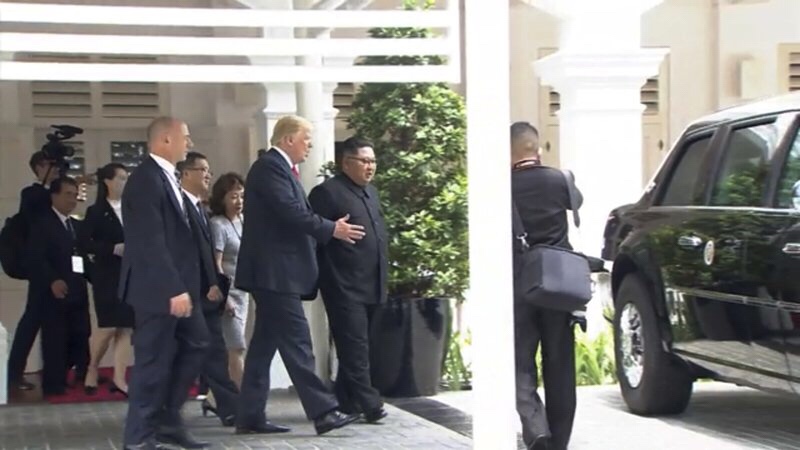 (Image: Trump and Kim as they walk over to check out “The Beast.” Source: AP News)
(Image: Trump and Kim as they walk over to check out “The Beast.” Source: AP News)
Another key aspect of the summit was the ability for Kim Jung-un and Donald Trump to build rapport with each other. Either the summit would be confrontational and the world would slip right back into a fear of possible war or the two leaders would be able to cultivate a decent relationship which could pave the way for future negotiations. Thankfully, the latter occurred.
Trump and Kim shared some very interesting, unscripted moments together in front of the cameras. The two leaders shared smiles throughout the event, and both walked a slightly confident swagger following the closed door meeting (TIME). Possibly the most intriguing moment occurred when Trump showed off “The Beast”–the presidential limo–to the North Korean leader (Fox News). The two appeared friendly during the summit, and that likely will assist in continuing negotiations in the future; it is easier to negotiate with someone if you find something in common, even if they are your enemy.
Trump even had some very kind words to say about Kim following their closed sessions during the summit. The President described the relationship between them as a very special bond. At one point, Trump even attempted humor, joking about getting a perfect picture in which the leaders look thin (NY Times). Trump’s words, body language, and even overall demeanor during these unscripted moments offered the possibility to gauge the summit. They confirmed that the two leaders got along and were able to discuss key issues in a mild manner under tense pressure.
Conclusion
It has been two weeks since the summit and already we have seen some advancement on both sides of the 38th parallel. President Trump has made good on his security promise by pulling the plug on the joint military drills (Yonhap). North Korea has started to remove its anti-American propaganda from shops and other locations across the country (NKNews).
Both President Trump and Kim Jung-un won something in this summit. Trump’s biggest takeaway was political. He can present the summit as successful use of diplomacy during his first term. Trump also got Kim to cease missile and nuclear testing for an elongated period of time in 2018–North Korea has yet to test a missile or nuke as it attempts diplomatic outreach to many nations. Kim won political legitimacy. Moreover, he gained legitimacy as a nuclear weapons state. Though his most important goal, the rest of the world will not confer the same legitimacy on Kim, and most likely will refuse to acknowledge his new found legitimacy if Pyongyang refuses to act as a responsible power in the world. The outcomes of the summit are tricky to parse, as diplomacy is complex.
Assigning a winner and loser of the summit is a paltry practice. Kim Jung-un won the legitimacy he pursued for years; even if the summit had no tangible outcomes, Kim still would have gained such legitimacy. He also gained, in writing, security guarantees from a sitting U.S. president. Trump gained a moratorium on nuclear and missile tests which backed the peninsula away from the brink of war. Trump’s biggest loss is legitimizing North Korea while not pushing for concrete steps toward denuclearization. Legitimizing Kim’s nuclear weapons also presents a challenge for Kim: he must now act as a responsible nuclear power to continue to posses and grow his legitimacy.
Future negotiations with North Korea surrounding the nuclear issue will shift as Kim will see himself as a bona-fide nuclear power, threatening enough for the United States president to meet with him, This is not to say that future talks will be for naught. As with this summit, major talks tend to correspond with lulls in testing, and provide some short-term room for progress to be made. Now, all we have to do is tactically use the opening created by the summit and push for concrete progress.
Notes
[1] The “Joint Statement of President Donald J. Trump of the United States of America and Chairman Kim Jung-un of the Democratic People’s Republic of Korea at the Singapore Summit” will be referenced as the “Joint Statement” in this post for brevity.
[2] For a copy of the Panmunjom Declaration, see “Full text of Panmunjom Declaration for Peace, Prosperity and Unification of the Korean Peninsula” in The Straights Times.
Upcoming Posts and Pages
Hello Dear readers,
I know it has been a long two-weeks since the summit, and I promise that I have been hard at work. Coming up tomorrow will be my in-depth analysis of the summit. I also have been devoting some time to developing a page devoted to the summit. This page will include primary sources, media coverage from all angles, and will be a source of information on the summit. It has been a pleasure to develop that page and I look forward to it being up soon–I don’t know exactly when yet.
Also, there may be some other changes coming up as I am thinking of new ideas. I promise to keep you all in the loop with the happenings on this site.
Thank you all for reading this site. If you have any ideas on how this site can be better, please make sure to let me know and I will try to incorporate ideas for you all to enjoy.
Conclusion of the Historic Summit
 (Image: Trump and Kim as they sign the joint statement at the end of yesterday’s summit. Source: The English Post)
(Image: Trump and Kim as they sign the joint statement at the end of yesterday’s summit. Source: The English Post)
By now, many know that the summit between Kim and Trump ended the signing of a joint statement, which, on a cursory glance is similar to other statements signed by North Korea. (A whole analysis of the statement and the summit will be coming this week.)
The signing of the statement is historic in itself; never has a sitting president signed the same document as a North Korean leader. No matter how successful the summit, it will represent a tectonic shift in relations between the United States and North Korea.
Sign Time
Trump and Kim have emerged from their working lunch and now we are off to a signing. (I am watching the summit on CNN.)
Trump, passing reporters, said the meeting has been going well, possibly better than anyone could’ve expected. While Trump’s words may be over hyped, they do hint at the possibility of something similar to a joint communique or declaration to come. The two did go to separate areas after Trump mentioned the signing.
So far Kim and Trump appear to be having cordial time together. They walk together, shake hands, and Trump even showed off his presidential Cadillac. The two appear to have built a good rapport with each other.
We are awaiting the end of the summit and this signing. As for myself, I’m off for tonight so I can get some sleep. I’ll write updates as quickly as I can and provide my full analysis of the summit in the coming days.
What to Watch For as we Head to Lunch
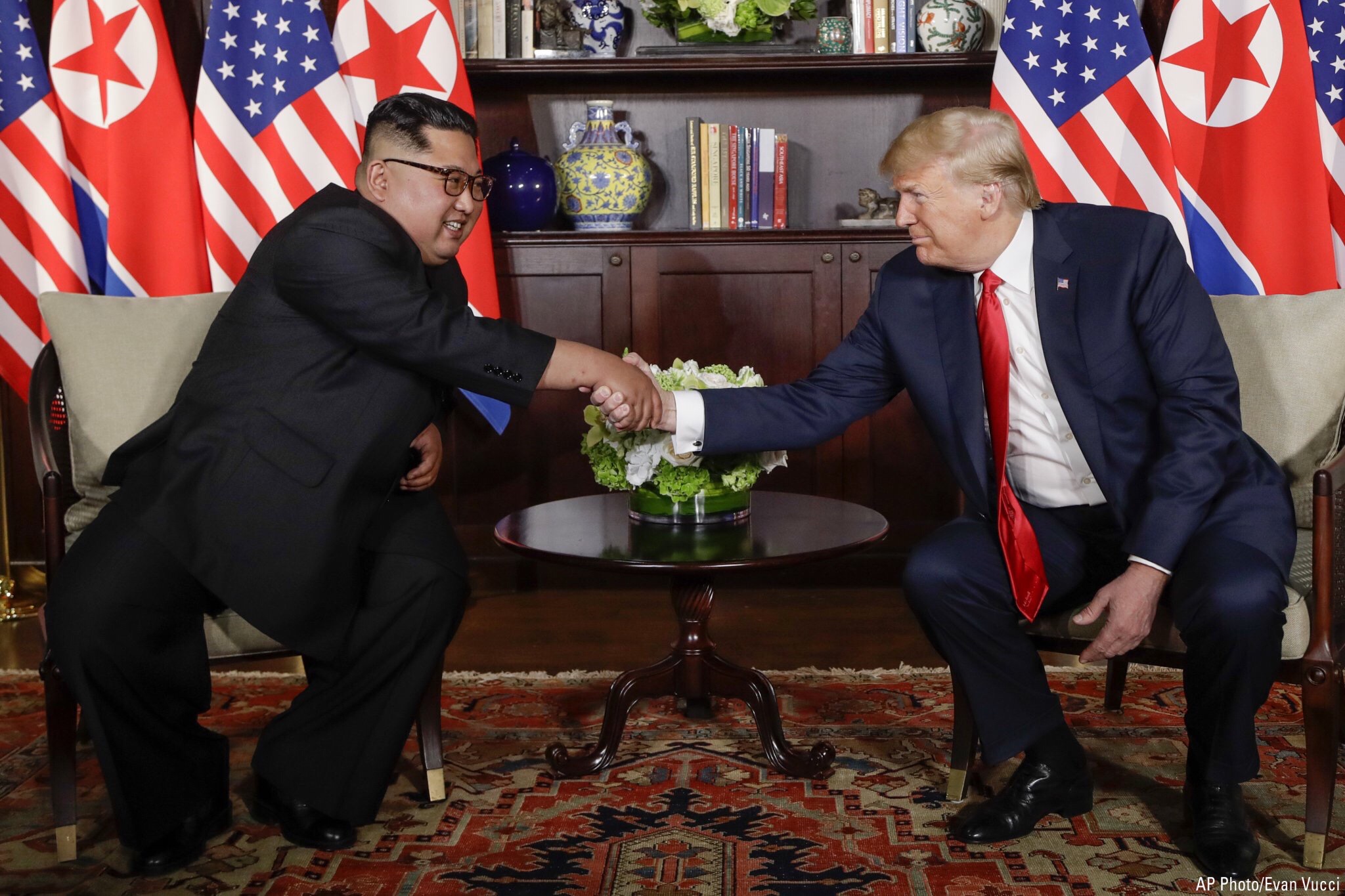 (Image: Trump and Kim shake hands before their bilateral meeting in Singapore. Source: Fox News Twitter)
(Image: Trump and Kim shake hands before their bilateral meeting in Singapore. Source: Fox News Twitter)
Kim Jung-un and President Trump have left their one on one and headed to a luncheon where diplomatic and expert staff will join them. The two leaders are continuing their historic summit which has the world watching.
Some things to watch for from the summit as we near the end:
- Substance and plans: Will there be an unveiling of a plan toward denuclearization?
- Statements: What will Kim Jung-un say? What about Trump’s words? How will the media–both American and North Korean–use public statements to shape the narrative?
- Human rights: Was the topic of human rights abuses even mentioned in this meeting? What was said and who said it?
- The relationship: How do Kim and Trump act together? How are they shaping the image through body language and gestures?
- Peace Treaty: Was their discussion on a formal treaty to end the Korean War? Were any stipulations in place for the treaty? What frame was the treaty presented? And, finally, was a treaty signed?
These are just a few points to watch in this summit. Hopefully, we’ll have answers to them all in the coming hours.
Houston We have Handshake
Kim Jung-un has officially gained more prominence in the world. Kim Jung-un and Donald Trump have shaken hands in Singapore before a background of American and North Korean flags and are now off to a 1-on-1 bilateral meeting with only translators present.
The summit is on and we await the news.
